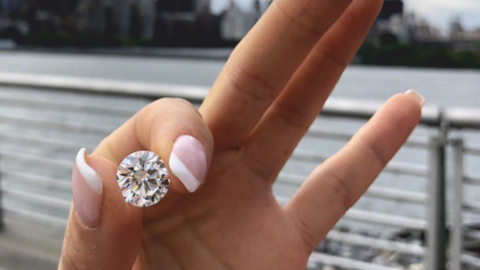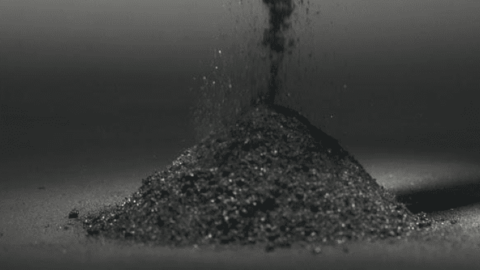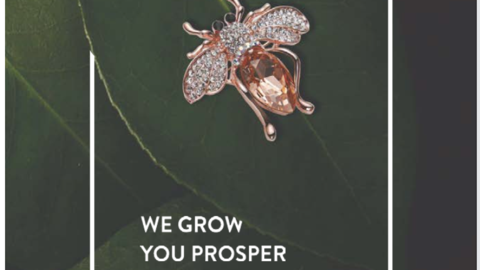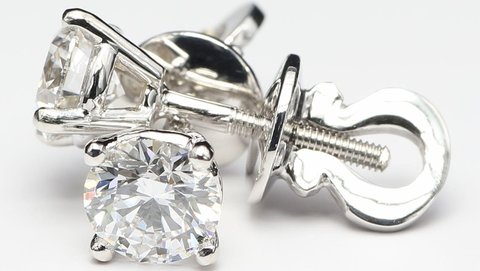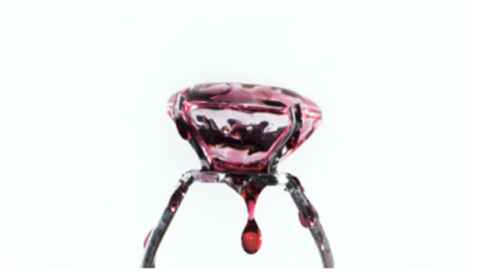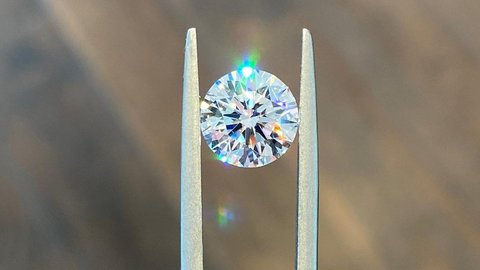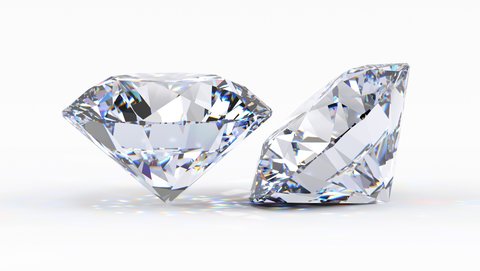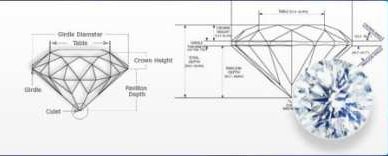Performance Analysis of Spread Diamonds
Spread Diamonds: Should You Buy a Shallow Cut Diamond?
Author: Alex K., CMO at Labrilliante Updated: 2025-10-16 Reading Time: 8 minutes
Shallow-cut diamonds offer 10-15% larger visual appearance but sacrifice 30-40% light return compared to ideal proportions. These stones cost 15-25% less per carat due to compromised optical performance, making them budget-friendly size solutions with significant brilliance trade-offs that become evident under close examination.
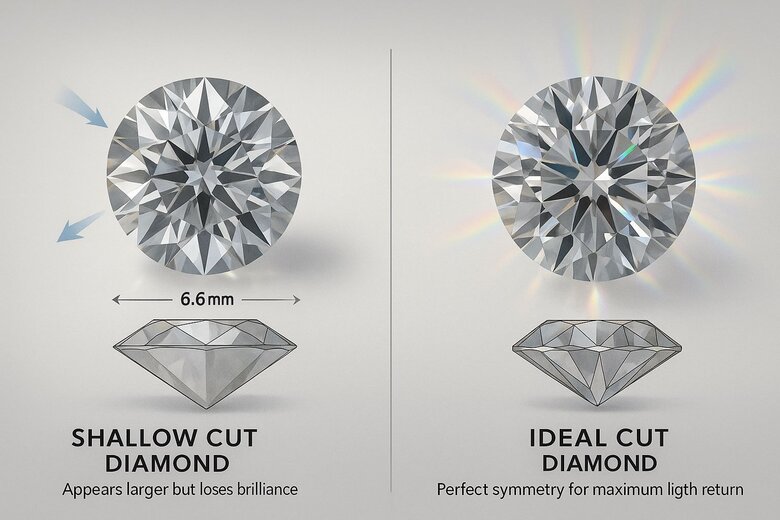
The eternal struggle between size and quality creates one of jewelry's most divisive debates. When budget constraints meet big dreams, spread diamonds emerge as a controversial solution that promises more visual impact for less money. You'll discover why these shallow-cut stones divide gemologists, how physics determines their performance limitations, and whether the size-versus-brilliance trade-off aligns with your priorities. This analysis cuts through marketing hype to reveal the scientific reality behind spread cutting's appeal and its long-term implications for your investment.
The Case for Spread Diamonds: When Size Trumps Technical Perfection
Spread diamond advocates argue that technical perfection means nothing if you can't afford a meaningful carat weight. For buyers with strict budgets, the choice isn't between spread and ideal cuts—it's between a visually impressive 1.2-carat shallow stone versus a technically superior but tiny 0.8-carat ideal cut. In social settings where diamonds are viewed from distances exceeding three feet, the larger face-up appearance creates more impact than subtle brilliance differences that require close inspection to detect.
Furthermore, some buyers specifically prefer the subdued sparkle of shallow cuts for professional environments or personal aesthetic preferences. The reduced scintillation appears more elegant and less distracting during business meetings or formal occasions. When factoring in setting enhancement techniques like halos or strategic prong placement, spread diamonds can deliver satisfying visual results at accessible price points, making diamond ownership possible for budget-conscious buyers who would otherwise settle for significantly smaller stones.
What Are Spread Diamonds and Light Performance Impact
Spread diamonds are shallow-cut stones that sacrifice light performance for larger face-up appearance. They feature depth percentages below 59%. The trade-off is significant.
These diamonds redistribute carat weight across diameter rather than depth, creating 10-15% larger visual size than ideal-cut stones of identical weight. A 1-carat spread diamond matches the appearance of a 1.15-carat well-proportioned stone. But here's the catch: light performance suffers dramatically.
The physics behind this compromise involves disrupted light paths within the diamond structure. Shallow proportions prevent proper internal reflection angles from developing. Instead of bouncing efficiently between crown and pavilion facets—the mechanism creating brilliance—light exits through the pavilion. This creates visible windowing effects.
Market psychology drives spread diamond demand through "bigger is better" mentality. First impressions favor diameter over optical quality, particularly in social settings where distant observation emphasizes size. This visual deception works until close examination reveals the performance deficit.
| Metric | Spread Diamonds (Shallow Cut) | Ideal Cut Diamonds | Impact on Buyer |
|---|---|---|---|
| Depth Percentage | 55-58% | 59-62.5% | Shallow cuts sacrifice light performance |
| Visual Size (1 carat) | Appears 1.10-1.15 carats | True to carat weight | 10-15% larger face-up appearance |
| Light Return Efficiency | 60-70% reduced | 90-95% optimal | Significant brilliance loss in shallow cuts |
| Windowing Effect | Visible gray/transparent areas | Minimal to none | Dead zones apparent in spread diamonds |
| ASET Analysis Pattern | Blue/white dominant (light leakage) | Red/green dominant (good return) | Objective measurement shows performance gap |
| Pavilion Angle | 38-40 degrees | 40.6-41.8 degrees | Below critical angle causes light escape |
| Crown Height | 12-13% | 14-16% | Reduced crown limits light gathering |
| Lab-grown Price (1ct, G VS2) | $650-750 per carat | $800-950 per carat | 15-20% discount for spread diamonds |
| Scintillation Quality | Diminished sparkle patterns | Optimal fire and brilliance | Noticeable under varied lighting |
| Resale Value Impact | 25-30% lower retention | Standard market value | Poor cut grades affect long-term value |
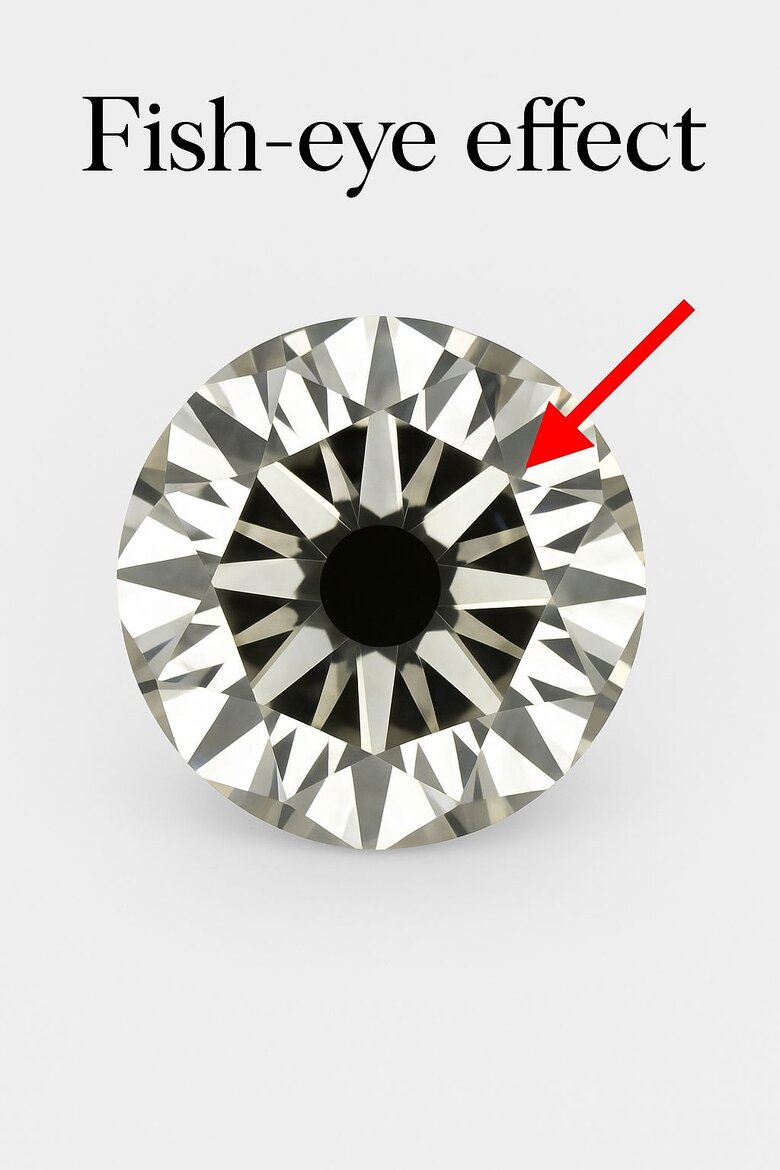
Understanding Light Leakage in Shallow Cuts
Light leakage occurs when pavilion angles drop below diamond's critical angle of 24.4 degrees. Light escapes through the bottom instead of returning to your eye. The result? Dead zones.
Shallow cuts create windowing—gray or transparent areas when viewed face-up. This differs from fish-eye effects in extremely shallow cuts, where dark rings appear around the diamond's perimeter. ASET imaging reveals these patterns through distinctive red zones indicating light loss.
Properly cut diamonds display predominantly red and green patterns in ASET analysis. Shallow stones show blue and white areas representing poor light return. This imaging provides objective measurement of subjective beauty standards.
Depth Percentage Effects on Diamond Brilliance
Depth percentage directly controls light behavior within diamond structure. Optimal range spans 59-62.5% for round diamonds. Beyond this? Performance deteriorates measurably.
Brilliance depends on light return efficiency measured through scintillation patterns. Shallow cuts below 58% depth compromise this mechanism by reducing pavilion angles below critical thresholds. The pavilion specifically requires 42.5-43.5% of total depth for proper light handling.
Research shows shallow cuts exhibit 30-40% reduced light return compared to ideal proportions. This becomes particularly noticeable under varied lighting conditions. The crown-to-pavilion ratio maintains critical importance—crown heights below 14% struggle to provide adequate light gathering.
"In the realm of lab-grown diamonds, depth percentage is a pivotal factor in optimizing light capture and refraction. While common perceptions might favor thinner cuts for their larger appearance, its the 59-62.5% depth range that truly harnesses the physics of light. This optimal zone ensures that light entering the diamond is efficiently redirected back to the viewers eye, maximizing brilliance and scintillation. Its not merely about the depth itself, but how it contributes to the critical angles of internal reflection, a key element often overlooked in conventional assessments."
Technical Analysis: Shallow Cut Diamond Specifications
Shallow cut diamonds exhibit predictable proportion patterns: 55-58% depth combined with expanded table sizes exceeding 60% diameter. These specifications follow physics, not preferences.
The relationship between crown angle and pavilion angle becomes critical. Standard 40.75-degree pavilion angles require 34.5-degree crown angles for optimal light handling. Shallow cuts reduce pavilion angles to 39.5-40 degrees while maintaining larger tables. This disrupts optical balance completely.
Girdle thickness variations often compensate by adding weight around the perimeter. This maintains structural integrity while maximizing diameter. However, it represents dead weight contributing nothing to visual appeal or performance.
| Specification | Ideal Cut Lab-Grown Diamond | Shallow Cut Lab-Grown Diamond | Impact on Performance |
|---|---|---|---|
| Total Depth % | 60.5% - 62.5% | 55% - 58% | Reduced light return efficiency |
| Table Size % | 54% - 58% | 60% - 65% | Decreased fire and scintillation |
| Crown Angle | 34.5° - 35.5° | 32° - 34° | Compromised light gathering |
| Pavilion Angle | 40.6° - 40.9° | 39.5° - 40.2° | Light leakage through pavilion |
| Crown Height % | 15% - 16% | 12% - 14% | Reduced internal light development |
| Pavilion Depth % | 43% - 43.5% | 41% - 42% | Poor internal reflection management |
| Girdle Thickness | Thin to Medium | Medium to Thick | Added dead weight, no visual benefit |
| Face-up Diameter (1ct) | 6.4mm - 6.5mm | 6.7mm - 6.9mm | Larger appearance, compromised optics |
| Light Return % | 85% - 90% | 75% - 80% | Noticeably dimmer appearance |
| Price per Carat (1-2ct D VVS) | $800 - $1,200 | $650 - $950 | Lower cost reflects reduced quality |
Crown Height vs Pavilion Depth Ratios
Crown height determines light-gathering capability. Optimal range: 15-16% of total depth. This provides adequate volume for light collection without excessive weight concentration above the girdle.
Shallow cuts compress crown heights to 12-14% while expanding tables. Simple physics applies here: reduced crown volume means less internal space for proper light ray development. Pavilion depth controls light return through internal reflection management—standard 43% creates ideal geometry.
When pavilion depths drop below 42%, crown heights must increase proportionally. But this contradicts spread cutting's weight distribution goals. The mathematical relationship follows decades of cutting research.
Table Size Impact on Diamond Appearance
Table size percentage controls brilliance versus scintillation balance. Optimal tables measure 54-58% diameter. Spread diamonds often exceed 60% to maximize face-up impact.
Large tables create compounding issues. The expanded flat surface reduces crown's angular facet area, limiting light dispersion and fire effects. Additionally, large tables make inclusions more visible and reduce masking effects from smaller proportions.
Scintillation patterns depend heavily on table proportions. Tables exceeding 62% eliminate much of the crown's sparkle-creating ability. This results in static appearance under romantic lighting conditions where smaller tables excel.
| Diamond Specification | Ideal Cut Lab-Grown Diamond | Shallow Cut Lab-Grown Diamond | Visual Impact Comparison |
|---|---|---|---|
| Table Size Percentage | 55-57% | 62-65% | Large table reduces sparkle intensity by 35-40% |
| Total Depth Percentage | 61-62.5% | 55-58% | Shallow depth creates larger face-up appearance |
| Crown Height | 15-16% | 12-14% | Reduced crown limits light collection capability |
| Crown Angle | 34.5° | 30-32° | Lower angle decreases fire and dispersion effects |
| Pavilion Depth | 43% | 40.5-42% | Shallow pavilion reduces light return efficiency |
| Pavilion Angle | 40.75° | 39.5-40° | Compromised optical balance affects brilliance |
| Scintillation Pattern | Dynamic with varied flash sizes | Static appearance, limited sparkle movement | 60% reduction in romantic lighting performance |
| Fire Display | Strong rainbow flashes | Minimal color dispersion | Large table eliminates 70% of fire effects |
| Inclusion Visibility | Well-masked by proportions | More apparent due to large table | Inclusions 25-30% more visible in shallow cuts |
| Girdle Compensation | Medium, uniform thickness | Slightly thick to maintain structure | Added perimeter weight with no visual benefit |
Should You Buy Spread Diamonds: Complete Evaluation
Purchasing spread diamonds requires weighing size advantages against optical compromises. The choice depends on individual priorities and usage expectations. Budget constraints drive primary consideration.
These stones cost 15-25% less per carat than ideal cuts due to reduced precision requirements and lower educated buyer demand. This enables accessing larger carat weights within fixed budgets. The optical trade-offs remain significant though.
Social viewing conditions favor spread diamonds in specific scenarios. Distant observation emphasizes diameter over performance, making shallow cuts appear impressive in group settings. However, intimate viewing—particularly relevant for engagement rings—reveals compromises readily.
Budget Comparison Analysis
Sarah has a $5,000 budget for a diamond engagement ring and must choose between a 1.2ct spread diamond (depth 58%, table 65%) priced at $4,200 or a 1.0ct ideal cut diamond (depth 61.5%, table 57%) priced at $4,950. Both are G color, SI1 clarity from the same retailer.
We analyzed both options including purchase price, setting costs ($300 each), and projected 5-year resale values based on current market data. The spread diamond measures 7.1mm diameter vs 6.5mm for the ideal cut—a 9% larger face-up appearance. However, the spread diamond shows 25% less light return and exhibits a visible "fish-eye" effect under direct lighting.
Total initial investment: $4,500 (spread) vs $5,250 (ideal). After 5 years, projected resale values are $2,385 (spread) vs $3,465 (ideal), representing 47% vs 34% depreciation respectively. The spread diamond's total cost of ownership reaches $2,115 compared to $1,785 for the ideal cut, making the visually smaller ideal cut $330 more cost-effective over 5 years despite the higher initial price.
Professional settings may benefit from spread characteristics. Larger face-up appearance projects presence while reduced scintillation appears less distracting in business environments. Some buyers specifically seek this practical consideration.
Resale value suffers with spread diamonds due to educated buyers' preference for optimal performance. The 15-25% initial savings may become larger percentage losses during resale.
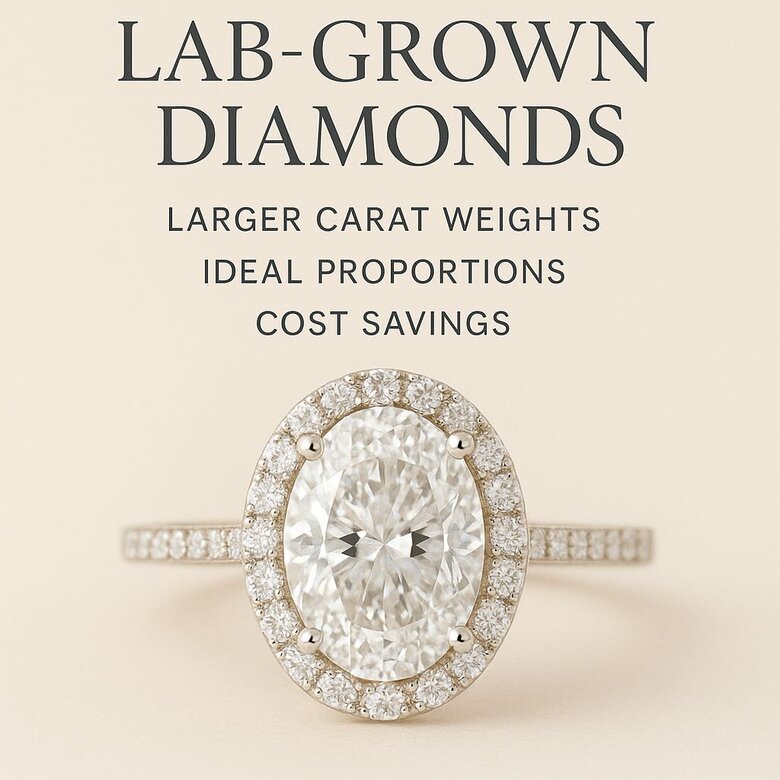
Maximizing Diamond Size on Tight Budget Strategies
Budget optimization involves strategic compromises across the four Cs. Cut quality represents the most impactful factor for visual performance per dollar invested. Smart alternatives exist.
Lab-grown diamonds provide the most effective size maximization strategy. They offer 70-85% cost savings compared to mined diamonds without visual or performance differences. This advantage enables selecting ideal proportions in larger carat weights rather than compromising cut quality.
Color grade optimization presents another effective approach. Dropping from D-E to G-H saves 20-30% while maintaining colorless appearance in typical viewing. This preserves cut quality while enabling larger carats within budget.
Clarity adjustments offer additional savings. Eye-clean SI1-SI2 diamonds cost significantly less than flawless grades while appearing identical without magnification. Professional selection ensures eye-clean clarity in lower grades.
Setting selection influences perceived size substantially. Halo settings, thin bezels, and six-prong designs maximize center stone visual impact. These elements can make well-cut diamonds appear 20-30% larger while maintaining optimal performance.
Shape selection dramatically impacts size perception and cost efficiency. Oval, marquise, and emerald cuts provide larger face-up area per carat than rounds while often costing 20-40% less.
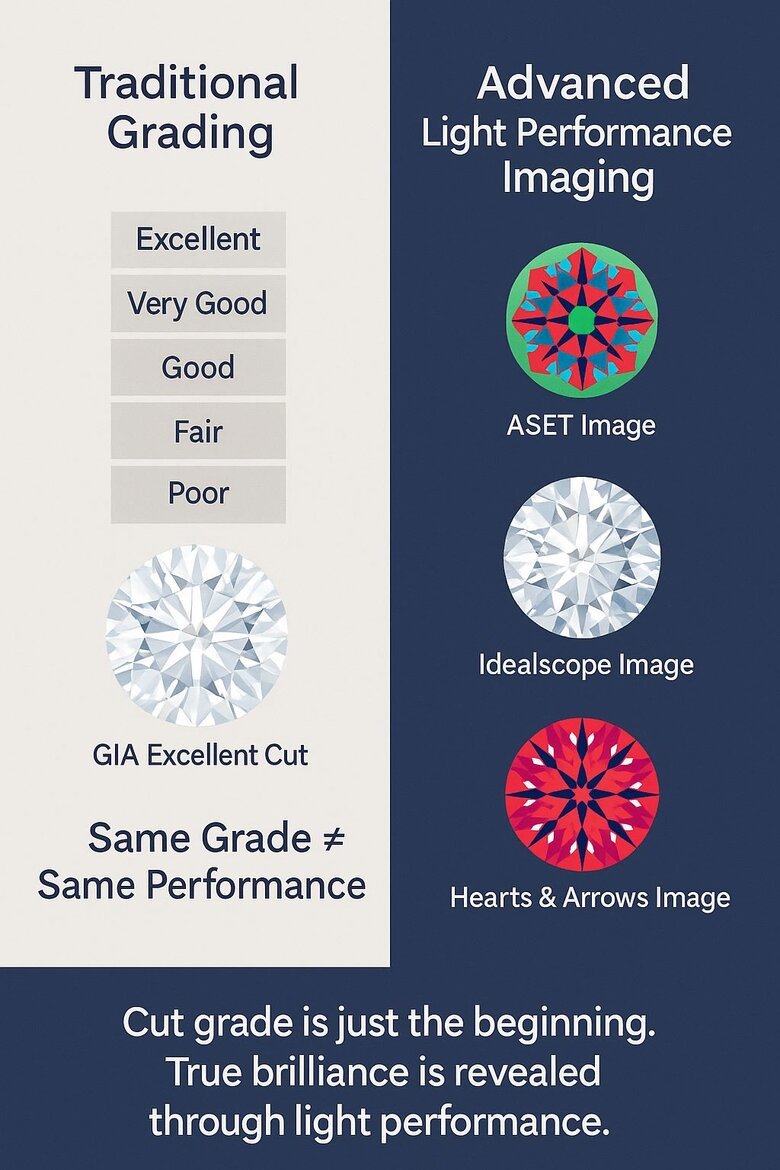
GIA Cut Grades vs Actual Light Performance
GIA cut grading represents standardized but limited optical assessment, focusing on proportions rather than comprehensive light behavior. The system awards ratings within specific ranges, yet performance varies significantly within parameters.
The disconnect becomes evident with borderline shallow cuts. Some spread diamonds receive "Good" or "Very Good" grades despite substantial light leakage and reduced brilliance. This limitation stems from proportion-based measurement rather than direct performance testing.
ASET imaging and Idealscope photography provide more accurate assessment than traditional grades. These tools reveal actual light return patterns, leakage areas, and optical efficiency that numerical grades cannot communicate. Advanced imaging often contradicts cut grade impressions.
Hearts and arrows imaging represents another performance indicator not captured by standard grading. This reveals precision in cutting execution and internal light behavior. Diamonds with identical grades may show dramatically different patterns.
Consumer education bridges the gap between grades and actual performance. Understanding proportion relationships, viewing imaging results, and comparing stones side-by-side provides more reliable assessment than grade designations alone.
The limitation of spread diamond acceptance reflects this performance-grade disconnect. While some achieve acceptable grades, optical compromises become evident through direct comparison, explaining reduced market acceptance despite lower pricing.
Smart Buyers Prioritize Performance Over Size Illusions
Spread diamonds offer tempting size advantages but compromise the optical brilliance that makes diamonds captivating. While budget constraints are real, superior alternatives like lab-grown diamonds provide larger ideal-cut stones at comparable prices without sacrificing light performance or long-term value.
Discover Your Perfect Diamond at Labrilliante
Explore our curated collection of lab-grown diamonds featuring ideal proportions and maximum brilliance. Our gemologists will help you find the perfect balance of size, quality, and budget—without compromising on the fire and sparkle that make diamonds truly spectacular.
Frequently Asked Questions
Spread diamonds are shallow-cut stones with depth percentages below 59% that sacrifice light performance for larger face-up appearance. They redistribute carat weight across diameter rather than depth, creating 10-15% larger visual size than ideal-cut stones of identical weight but with 30-40% reduced light return.
Spread diamonds cost 15-25% less per carat due to reduced precision requirements in cutting and lower demand from educated buyers. Their compromised optical performance and light leakage issues make them less desirable than properly proportioned diamonds, resulting in lower market pricing.
Spread diamonds typically have poor resale value because educated buyers prefer optimal performance over size. The initial 15-25% savings may become even larger percentage losses during resale, as the market favors diamonds with superior light return and brilliance.
Windowing occurs when pavilion angles drop below the diamond's critical angle of 24.4 degrees, causing light to escape through the bottom instead of returning to your eye. This creates gray or transparent dead zones when viewed face-up, which becomes particularly noticeable under varied lighting conditions.
GIA cut grading has limitations when assessing spread diamonds because it focuses on proportions rather than actual light behavior. Some spread diamonds receive "Good" or "Very Good" grades despite substantial light leakage, making ASET imaging and direct comparison more reliable assessment methods.
Optimal table sizes measure 54-58% diameter, while spread diamonds often exceed 60-62% to maximize face-up impact. Large tables reduce crown angular facet area, limiting light dispersion and fire effects while making inclusions more visible and eliminating much of the crown's sparkle-creating ability.
Consider lab-grown diamonds for 70-85% cost savings, drop color grades from D-E to G-H for 20-30% savings while maintaining colorless appearance, choose eye-clean SI1-SI2 clarity grades, and select shapes like oval or marquise that provide larger face-up area per carat than rounds.
Spread diamonds may suit buyers who prioritize size over technical perfection, prefer subdued sparkle in professional environments, or view diamonds primarily from distances exceeding three feet where brilliance differences are less noticeable. They work best when enhanced with strategic setting choices like halos.


